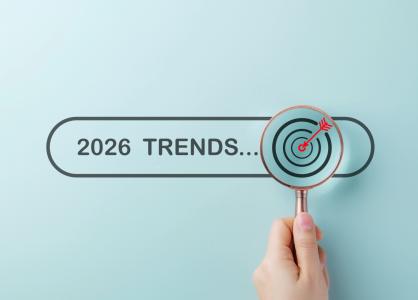The collectibles industry has always thrived on transformation — from vintage stamps and rare coins to NFTs, digital wearables, and AI-generated art. But as we move toward 2026 and beyond, a new era is dawning — one where technology, regulation, and creativity converge to redefine what it means to collect, display, and value our treasures.
At Collectiblepedia, we’re not just watching these shifts; we’re mapping them. As a hub for collectible knowledge, insight, and discovery, our mission is to help collectors of all kinds understand where the future is headed — and how to prepare their collections for it.
Let’s explore the groundbreaking trends shaping the collectible landscape ahead.
🖼️ 1. AR & VR: The Immersive Showcase Revolution
The days of glass display cases are evolving into augmented reality (AR) and virtual reality (VR) experiences. Imagine walking into a digital gallery — a full-scale 3D environment where your collectibles can be viewed, rotated, and even interacted with in real-time.
According to Holo-Artisan: An Interactive Holographic Virtual Museum Platform, advancements in holographic projection and mixed-reality displays are making this vision increasingly accessible. Collectors could soon design their own virtual museums, sharing immersive experiences with audiences around the world.
💡 Collectiblepedia’s Preparation:
Our future roadmap includes 3D and AR display integration, allowing users to visualize collectibles in lifelike settings — from holographic sculptures to virtual card galleries. The platform’s modular structure will support export-ready metadata compatible with AR and metaverse environments.
💡 2. Holographic & Light-Based Collectibles
Art and technology are merging into breathtaking forms. Holographic and light-based collectibles — digital artworks that change based on environment, angle, or interaction — are gaining traction as the next frontier of creativity.
Researchers are developing ways to combine photonics, projection, and blockchain authentication to create one-of-a-kind digital masterpieces. These aren’t just collectibles — they’re living, glowing art forms.
💡 Collectiblepedia’s Preparation:
We are developing support for emerging digital collectible types, including light-based and holographic art. As these categories evolve, Collectiblepedia aims to provide the classification standards and educational content to help collectors and creators understand, verify, and catalog them accurately.
🤖 3. AI-Curated Drops & Predictive Collecting
Artificial intelligence is changing how we discover, evaluate, and even create collectibles. AI-driven platforms are learning user preferences to curate personalized collectible drops, suggest undervalued items, and even predict future appreciation potential using hedonic pricing models — such as those discussed in The Arte-Blue Chip Index: A Financial Benchmark for Fine Art Markets.
This shift makes collecting smarter, more efficient, and more tailored than ever.
💡 Collectiblepedia’s Preparation:
Our data architecture is being designed to integrate AI-based recommendation tools, helping users navigate markets more intelligently — from historical price trends to sentiment analysis. Collectiblepedia will become your data-driven companion for tracking, learning, and anticipating collectible trends.
💰 4. Fractional Ownership & Shared Collecting
In 2026, owning 100% of a collectible might not be necessary. Fractional ownership — where collectors co-own high-value items through tokenized shares — is transforming access and liquidity in the market.
This democratization allows everyday enthusiasts to invest in rare assets, from classic cars to historical artifacts, without the full capital burden.
💡 Collectiblepedia’s Preparation:
We are exploring integrations to fractionalization-friendly ecosystems, offering educational materials and listing tools that help users understand legal, tax, and valuation implications. Fractional ownership is about empowerment — and Collectiblepedia aims to be the platform that explains and connects it all.
For a deeper dive into this concept, visit Cointelegraph’s guide to fractional NFTs to see how shared collecting is evolving.
🌐 5. The Metaverse Integration of Collecting
Collectibles are extending beyond physical and digital into metaverse ecosystems, where ownership becomes identity. Imagine wearing your NFT watch, displaying your rare 3D comic cover, or showcasing your art collection in a metaverse gallery that others can explore.
According to Blockchain Wearables in the Metaverse (arXiv), these digital assets will soon function as social markers, investments, and creative self-expression tools all at once.
💡 Collectiblepedia’s Preparation:
Our future APIs will allow connection between Collectiblepedia profiles and metaverse galleries, enabling collectors to synchronize their collections and display them in immersive environments. Whether you’re in Decentraland, Spatial, or Unreal-based spaces, Collectiblepedia will help your collection travel across platforms.
⚖️ 6. Legal & Tax Shifts in the Digital Era
As collectible markets become more global and digital, legal and tax frameworks are evolving rapidly. Governments are clarifying positions on digital assets, cross-border transactions, and even import/export taxation on tokenized items.
Recent trends suggest an increasing emphasis on provenance documentation, anti-fraud oversight, and capital gains regulation for collectibles — both physical and digital.
💡 Collectiblepedia’s Preparation:
We’re developing content libraries and resources that explain these regulatory shifts in clear, accessible language. Our aim is to empower collectors to stay compliant and informed, wherever they are in the world.
For further reading, check out Deloitte’s Global Tax Outlook for Digital Assets 2025 — a valuable look into what’s ahead.
🧩 7. Immersive Galleries & Cross-Platform Experiences
The future of collecting will be social and immersive. Collectors will build virtual galleries, host interactive auctions, and connect across multiple platforms. The collectible world is becoming more collaborative, visual, and globally accessible.
💡 Collectiblepedia’s Preparation:
Our upcoming roadmap includes integration with third-party gallery platforms and social-sharing modules, letting collectors create custom, immersive experiences that can be shared across devices, apps, and metaverse spaces.
🌟 The Future Is Closer Than You Think
The collectibles landscape of 2026 and beyond will be dynamic, digital, and deeply interconnected. As the lines blur between art, asset, and experience, collectors will need tools that bridge tradition and technology.
That’s where Collectiblepedia comes in — your trusted source for insights, trends, and education in the ever-evolving world of collectibles. From AR visualization and AI recommendations to legal insights and global connections, we’re preparing to support collectors at every step of the future journey.
So, if you want your collection ready for tomorrow’s world — start with Collectiblepedia today.
🌍 Stay tuned — next week we’ll begin exploring AR collectibles, fractional ownership models, and how to future-proof your collection with us.
🔗 Explore more at www.collectiblepedia.com
#FutureOfCollecting #Collectiblepedia #Collectibles #ARCollectibles #Metaverse #FractionalOwnership #DigitalAssets #AICollecting #VirtualGallery #Innovation #Phygital #HolographicArt #CollectorsCommunity #FutureTrends 🚀

